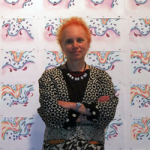TFMS’s Fourth Annual Film Series, February 2011, offered a range in forms of alternative animation and collage. Participating filmmakers included cutout animator and collagist Lewis Klahr (California Institute of the Arts), computer animator and video installation artist James Duesing (Carnegie Mellon University), and animator Karen Aqua, whose short films have screened in Croatia, Japan, and France and on the iconic children’s television program, “Sesame Street.”
Karen Aqua (1954-2011)

According to Leah Sullivan, Animation Magazine, animator Karen Aqua “has a distinctive style and vision of her own, coupled with a dancer’s sense of movement and a musician’s sense of rhythm.”
Karen Aqua has been making animated films since graduating from Rhode Island School of Design in 1976. She has completed 11 independently produced animated films and one collaborative animation/live action video. Her award-winning films have screened worldwide, at festivals in Europe, Asia, North and South America, New Zealand, and the Middle East. She has received fellowships from the American Film Institute, the MacDowell Colony, Millay Colony for the Arts, and Fundación Valparaíso (Spain), among many others. Aqua has taught animation at Boston College, Emerson College, and at workshops and residencies around the United States, and has served as a juror for film festivals in Japan, Canada, and the U.S. In 2005, a special program of Aqua’s animated films was presented at the Tehran International Animation Festival, Iran. Since 1990 she has directed/animated 22 segments for the acclaimed children’s television program “Sesame Street.”
One of Aqua’s recent films, “Twist of Fate” (2009), was screened at Telluride Film Festival, Starz Denver Film Festival, and Ottawa International Animation Festival, and has won awards at the Ann Arbor Film Festival, James River Film Festival, and Black Maria Film & Video Festival, New York.
Due to unforeseen circumstances, Aqua was unable to attend the screening of her work. Her frequent collaborator, musician Ken Field, represented her at the screening. Aqua’s program of animations for the Fourth Annual TFMS Film Series included the following films:
Heavenly Bodies
1980, 3 min, music by Handsome Brothers
An astronomical love story.
“Integrates style and content in a fluid tale of the relationship between the individual and the universe.” – Michael Blowen, Boston Globe
Yours for the Taking
1984, 7 min, collaboration with clay artist Jeanee Redmond, music by D. Sharpe
A three-legged cup embarks on a journey, filling itself with images and impressions of its surroundings.
Nine Lives
1987, 7 min, music by Ken Field, Robert Moses, and Ken Winokur
A fortune teller’s cards lead the viewer on a journey through time and collective memory, using the metaphor of a cat’s multiple lives.
Kakania
1989, 4 min, music composed by Karlo Tacky, performed by Skin
A striking blend of music and image, contrasting the tension and chaos of modern urban life with the ritualized order of tribal societies.
Perpetual Motion
1992, 5 min, music by Ken Field
A shrine to ritualized time. This film celebrates the cyclical nature of time and the symbols and rites which have been created to mark and honor its passage.
Ground Zero/Sacred Ground
1997, 9 min, music by Ken Field
In south central New Mexico, an ancient Native American rock art site lies 35 miles from the detonation site of the world’s first atomic bomb. The juxtaposition of these sites points to the striking contrast between the two worlds which created them: one which reveres and lives in harmony with the natural world, and one which, in striving to control the forces of nature, has created a means for its destruction.
Andaluz
2004, 6 min, collaboration with Joanna Priestley, music by Juanito Pascual
A traveler’s love letter to Andalucia, this animated film is an homage to the culture, landscape, and architecture of southern Spain. The film explores details of the natural world in relation to the four elements, and suggests the close relationship between people and the land which they inhabit.
Sensorium
2007, 5 min, collaboration with Ken Field, with animation by Karen Aqua and music by Ken Field
A hand-drawn experimental animation exploring the relationship between music and image.
An alphabet of abstract animated and musical gestures combines in various configurations to create a visible rhythm in this study of sound/motion synthesis.
Twist of Fate
2009, 8:40 min, sound by Ken Field, music by Birdsongs of the Mesozoic
This experimental animated film explores the transformative experience of being diagnosed with a life-threatening illness. This expressionistic piece captures impressions of such an experience: upheaval, uncertainty, a sense of physical intrusion, and loss of control. Exploring this emotional landscape, the film visualizes an internal world within the body, imagined on a cellular level.
“Modern illness is a combination of the scientific, the mysterious, and the ineffable — a startling subject for Aqua, one of the animation world’s most playful, rhythmic talents.” – Telluride Film Festival
James Duesing

Animation historian Robert Russett has said of James Duesing’s digital animations: “Characteristically composed of dark fantasy worlds and strange hybrids of animals and humans, Duesing’s digital animation offers comical and eccentric reflections on human interactions and desires in an increasingly violent and polluted world. On one level his imagery is composed of entertaining cartoon-like characters in various kinds of richly rendered environments. On another level his work probes serious sociological issues in a way that is at once provocative and disturbing.”
A professor in electronic and time based art at Carnegie Mellon University’s School of Art, James Duesing has had hundreds of exhibitions throughout the world in major museums, including New York’s Museum of Modern Art and the Los Angeles County Museum of Art; at film festivals, including Sundance and Ars Electronica; and for broadcast, including on MTV and Showtime. His work is held in collections at the Museum of Modern Art; the Goethe Memorial Museum, Tokyo; the UCLA Film Archive, Los Angeles; and The Israel Museum. He has been co-director of The STUDIO of Creative Inquiry, a center for interdisciplinary collaboration in art and science projects.
Duesing’s program of animations for the Fourth Annual TFMS Film Series included the following films:
Impetigo
1983, 5 min, 16mm original, hand drawn
“Impetigo” is the story of passion and possession in a steamy nocturnal landscape. The characters Zeke, an inhibited birdlike creature; Flake, a post-industrialist robot; and Fish, a fish, live in a barren tract amidst surveillance and entrapment. Their main concerns are lust and what to do on weekends.
Tugging the Worm
1987, 10 min, 16mm original, hand drawn
In a culture bounded by nihilism and a strong military presence monuments are raised to the dead and to the things that killed them. It would be austere if it were not dominated by high fashion and billboards that tell the characters there is a larger more beautiful world and it can be bought on credit. The inbred and hybrid beings that inhabit these landscapes enjoy seeing murders acted out for entertainment. They see each other only as stereotypes. They talk about going places and eating things. They dream of spending their life with someone or getting away from the one with whom they’re spending their life. They are told that in order to be safe they must not touch; yet, sometimes they touch. Sometimes they strike. Sometimes they dance. Sometimes they hold it all in.
Maxwell’s Demon
1990, 8 min, color, computer generated
When their culture shifts to being information and service based, industrialists are corralled on a reservation named Lorado to sell plastic things as remnants of their past traditions. The reservation is built on a polluted lake, which is a tourist attraction. In Lorado there are many forms of love and everyone keeps a pet. The story turns on the suicide of Fashionette’s fish, because of bad water conditions, and ends with a large-scale chemical fire.
Law of Averages
1996, 15 min, color, computer generated
“Law of Averages” is a story that occurs in two places, a lush garden and an addictive interactive theater called Big Ghost. In the garden two lovers meet and begin a relationship that is complicated by a lack of exact compatibility, daily compromise, and occasional sensuousness. The theater is the temptation in this exotic urban paradise. It stars a wild and addictive creature named Vynola. Vynola obsesses the minds of all that come to visit.
Tender Bodies
2003, 8 min, computer generated
“Tender Bodies” is a sinister yet humorous story that imagines a time when genetic experiments become an elite hobby. The creatures created are hunters and hunted, and one unusual specimen becomes the entertainment at a strange party.
End of Code
2009, 15 min, computer generated
An animation that combines narrative experimentation with the abstraction of motion capture about two groups of misfit hackers in a city of traffic. They speak a language of advertising, corporate branding, and self-help, while engaging in a battle to control traffic lights. The discovery that the entire social code is embedded in the access code that regulates traffic lights begins a twisted ride through an environment of characters caught in an endless rush hour.
Lewis Klahr

Called “the reigning proponent of cut and paste” animation by J. Hoberman of the Village Voice, collagist Lewis Klahr has been making films since 1977. Klahr is known for his uniquely idiosyncratic experimental films and cutout animations that have screened extensively in the United States, Europe, and Asia, including at New York’s Museum of Modern Art, the Toronto International Film Festival, the Hong Kong International Film Festival, the London Film Festival, and Los Angeles Filmforum. In May 2010, the Wexner Center for the Arts in Columbus, Ohio presented a five-program retrospective of his films.
Klahr’s “Wednesday Morning Two A.M.” (2009) was awarded a Tiger Award for Best Short Film at the 2010 International Film Festival in Rotterdam, the Netherlands. In its recent poll of the top 50 experimental filmmakers from 2000 to 2010, Film Comment magazine ranked Klahr fourth. His epic cutout animation “The Pharaoh’s Belt” received a special citation for experimental work from the National Society of Film Critics in 1994. He has also received commissions from European arts organizations, such as the Gronnegard Theater in Copenhagen, Denmark (for “Lulu”) and the Rotterdam International Film Festival (for “Two Minutes to Zero”). His work is in the permanent collection of the Museum of Modern Art in New York.
Lewis Klahr currently teaches film and video and experimental animation at the California Institute of the Arts.
Klahr’s program of animations for the Fourth Annual TFMS Film Series was entitled Prolix Satori and included only a handful of the seven films which follow the series description; Klahr substituted films at the time of their screening.
Prolix Satori, series title
2009-2010, digital video, 7 films, 78 minutes
“I have often worked in series before—’Picture Books For Adults,’ ‘Tales of the Forgotten Future,’ ‘Engram Sepals,’ ‘The Two Minutes to Zero Trilogy’ – but never quite like this. The main difference is that ‘Prolix Satori’ is both open-ended and ongoing with a variety of thematic focuses instead of a single, centralized one. As the series title suggests, it will include films that are very, very short (under a minute) and ones that are feature length. ‘Prolix Satori’ will also contain various sub-series: this program offers several films from ‘The Couplets’ (‘Wednesday Morning Two A.M.,’ ‘Sugar Slim Says,’ and all three ‘Nimbus’ films). ‘The Couplets’ will generally, but not exclusively, organize themselves around the pairing of various pop songs, and just as in the songs’ lyrics, around the theme of romantic love.” – Lewis Klahr
False Aging
2008, 14:45 min, digital video
Selected by Film Comment magazine as one of the best films of 2008.
“It’s hard to believe that ‘False Aging’ is less than 15 minutes long, given how powerfully it evokes passing decades punctuated by muffled explosions of longing and regret. A button revolves around a clock–and the world moves with it. Klahr shares Joseph Cornell’s alchemical genius, but his collaged reveries cast deeper shadows and offer little magical protection from death and disappointment. The soundtrack draws on ‘The Valley of the Dolls,’ Jefferson Airplane, and Lou Reed and John Cale’s ‘Songs for Drella.’ As Cale channels Warhol, recounting a nightmare involving a snowy park under the stairs and anxieties about troubles real and imagined, a blond man peers at cityscapes, a skeletal hand snatches a fortune, and no-longer-redeemable trading stamps flutter by.” – Kristin M. Jones, “Terra Incognita: Unknown Pleasures From Around the World,” Film Comment, January/February 2009.
The Nimbus Trilogy
Nimbus Smile, 2009, 8:30 min, digital video
Nimbus Seeds, 2009, 8:30 min, digital video
Cumulonimbus, 2010, 9:30 min, digital video
“Three romantic entanglements play out in the three ‘Nimbus’ videos, which extend Klahr’s interest in constructing almost legible narratives — but doing so in formalist terms that complicate and enhance the traditional pleasures of stories. The trilogy’s closer, ‘Cumulonimbus,’ is a movingly mature account of grief with a puckish sting in its tail.” – Chris Stults, Film Comment
Sugar Slim Says
2010, 7:00 min, digital video
Music: “Lump” and “Like a Nurse” by Marc Anthony Thompson, performed by Chocolate Genius, from the album “Swansongs”
Same address, different buildings. “Put the rope in the can.” Mark Anthony Thompson (aka Chocolate Genius Incorporated) and I became friends because our sons were classmates. He played me his new album and I showed him some of my recent films and we got excited about collaborating. This is the result. – Lewis Klahr
Wednesday Morning Two A.M.
2009, 6:30 min, digital video
Deep Night – what the mind refuses to grasp the body understands. – Lewis Klahr
Tiger Award winner for Short Film at the 2010 International Film Festival, Rotterdam, the Netherlands.
“Wednesday Morning Two A.M.” has been enthusiastically received, perhaps not only because it’s among [Klahr’s] most visually ravishing works, but also because it’s one of the most hopeful.” – Chris Stults, Film Comment
Lethe
2009, 23:00 min, digital video
In Greek mythology Lethe is the underworld river from which the dead drink to forget their life on earth. “Lethe” is the first film in a possible trilogy of mythologically inspired pieces with female protagonists. – Lewis Klahr
“A straightforward narrative film by Klahr’s standards, ‘Lethe’ is a pulpy melodrama that incorporates sci-fi B-movie elements into a story straight out of a Vincente Minnelli women’s picture. It also functions as one of Klahr’s most sophisticated enactments of the intertwining of Thanatos and Eros, as if the inanimate materials that he is bringing back to life wish to return to their natural state of dead calm.” – Chris Stults, assistant curator of film/video, The Wexner Center for the Arts.
